Need a homemade bread recipe without yeast? Look no further. Here is a super easy way of making bread at home even if you don’t have any yeast on hand.
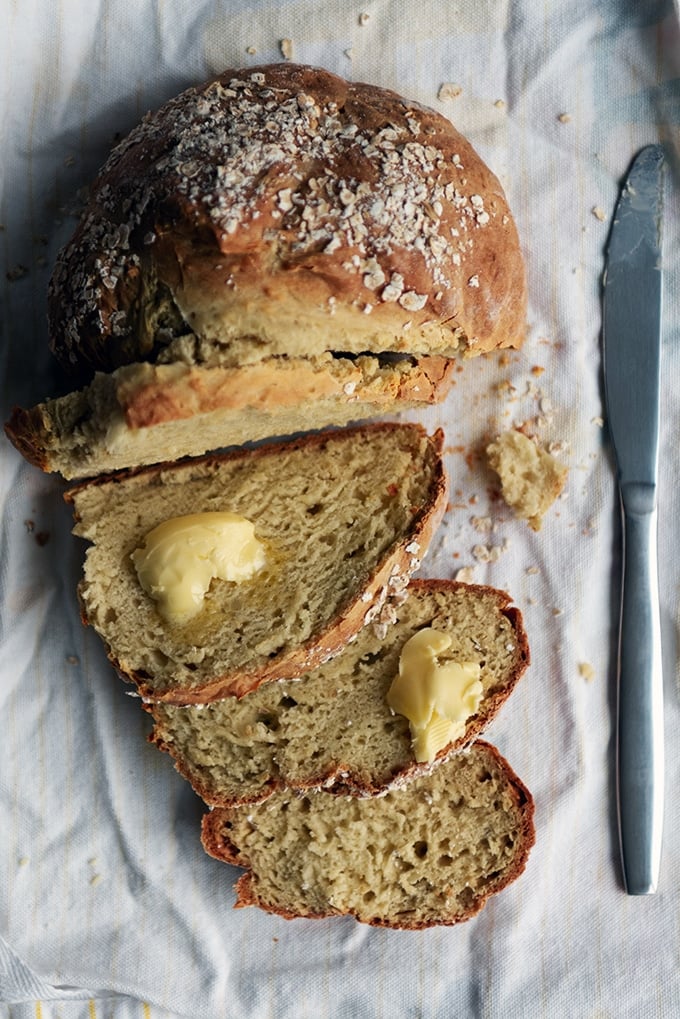
Nothing can beat homemade bread that has no yeast. If you agree with us and want to try easy bread recipes, go check out our no yeast dinner rolls too!
We know there are people out there who find baking with yeast really challenging. Are you one of them? This recipe is for you!
Enjoy this super easy yeast-free bread until you get enough experience with yeast.
Jump to:
- Why Choose Making No Yeast Bread?
- What Makes Homemade Bread Rise without Yeast?
- No Yogurt? No Problem!
- Can I Use Baking Powder Instead of Baking Soda?
- Which Flour Can We Use?
- Alternative Add-Ins
- How To Make Bread without Yeast
- Our Tips
- Storing
- Serving Suggestions
- FAQs
- More Homemade Bread Recipes
- 📖 Recipe
- More Bread Recipes
Why Choose Making No Yeast Bread?
If the thought of dealing with yeast makes you cringe, then this is your kind of bread. Yeast can be a bit tricky – it needs just the right temperature and conditions to work. With this homemade no yeast bread, you skip all that fuss.
One of the best things about homemade bread without yeast is that it’s a real time-saver. You don’t have to wait hours for the dough to rise. Mix your ingredients, pop it in the oven, and voila – fresh bread in no time!
Also, some people either can't eat yeast or prefer not to. No yeast bread is perfect for those with allergies or dietary restrictions. It’s a game-changer if yeast is on your “no” list.
So, whether you're short on time, avoiding yeast, or just want to try something new, give this no yeast bread a try. It’s simple, satisfying, and oh-so-delicious!
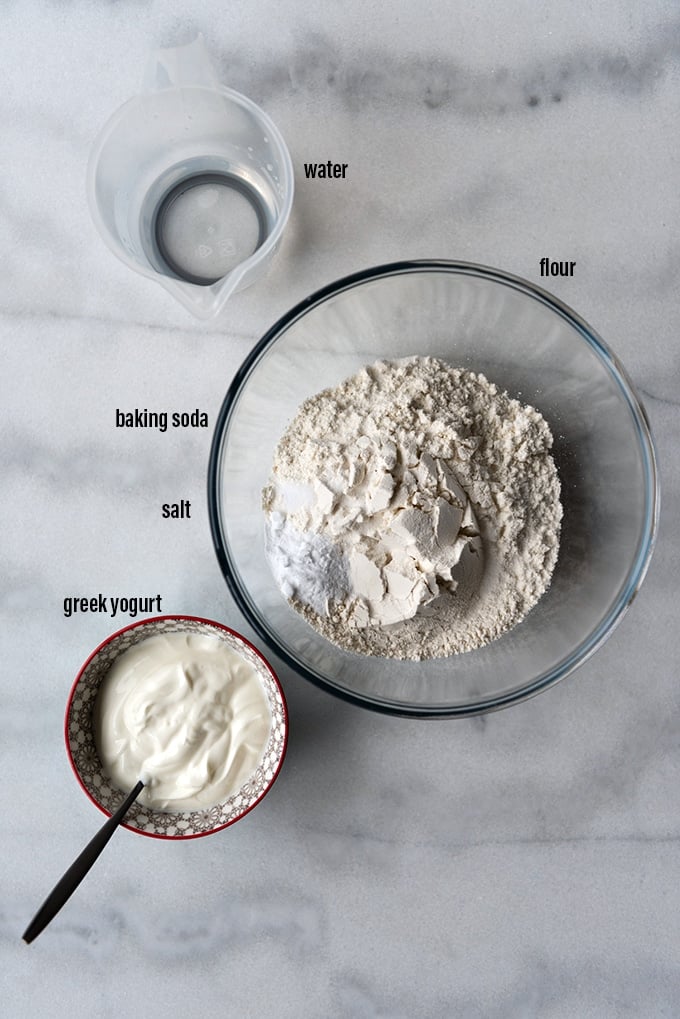
What Makes Homemade Bread Rise without Yeast?
Curious about how your homemade bread can rise and become fluffy without yeast? It's all thanks to two special ingredients in our recipe: baking soda and yogurt. Let's learn how.
1. Baking Soda: Baking soda is the best ingredient when it comes to making bread without yeast. It's a leavening agent, which means it helps the bread puff up. When baking soda mixes with moisture and an acid (hello, yogurt!), it starts a chemical reaction. This reaction creates little bubbles of carbon dioxide gas. When the bread bakes, these gas bubbles expand, causing the dough to rise and making the bread light and airy.
2. Yogurt: Yogurt is a game-changer in no yeast bread. Yogurt is the acid that reacts with baking soda. It starts the fizzing action that forms those gas bubbles. Plus, yogurt makes the bread moist and gives it a slight tang, adding a delicious flavor.
3. Mixing Matters: You want to mix your ingredients just enough to combine them. Overmixing can pop those precious gas bubbles. So, gentle mixing is the way to go. It helps keep the air bubbles in the dough, which is what makes your bread rise in the oven.
No Yogurt? No Problem!
So, you're ready to make some no-yeast bread, but oops, there's no yogurt in the fridge. Don't worry! The great news is that you can still make your bread with some handy substitutes.
1. Buttermilk: You can use buttermilk just like in a traditional Irish Soda Bread. Buttermilk will react with the baking soda just like yogurt, helping your bread rise and giving it a nice texture. Plus, it adds a similar tangy flavor to your bread.
2. Sour Cream: Thick and creamy, sour cream is another excellent swap. It's a bit richer than yogurt, so your bread might come out a tad denser, but it'll still be super tasty and rise nicely.
3. Milk + Lemon Juice or Vinegar: No buttermilk or sour cream? No problem! Just add a tablespoon of lemon juice or vinegar to a cup of milk. Let it sit for about 5 minutes until it starts to curdle a bit. This homemade mixture works like a charm in place of yogurt.
4. Dairy-Free Options: If you’re avoiding dairy, you can use plant-based yogurts made from almond, soy, or coconut. Just make sure they're the unsweetened and unflavored kinds. You can also make a dairy-free buttermilk (the milk + vinegar combo) with a plant-based milk.
Can I Use Baking Powder Instead of Baking Soda?
Great question! In the world of baking, baking soda and baking powder are not the same. So, we don't recommend baking powder in this no-yeast bread recipe.
If baking powder is the only raising agent and you want to give it a try, keep these in mind:
You’ll need more of it. As a rule of thumb, use about three times the amount of baking powder as you would baking soda (3 teaspoons for this recipe).
Changing from baking soda to baking powder will alter the taste and texture of your bread. Baking powder can make the bread a bit lighter and fluffier, which is nice, but it might also have a slightly different flavor.
Here’s a pro tip – add about 2 tablespoons of oil to your dough when using baking powder. Why? Oil adds moisture and fat which can help your bread maintain a nice, soft texture, especially since you’re tweaking the original recipe. It helps make sure your bread doesn't turn out dry or crumbly.
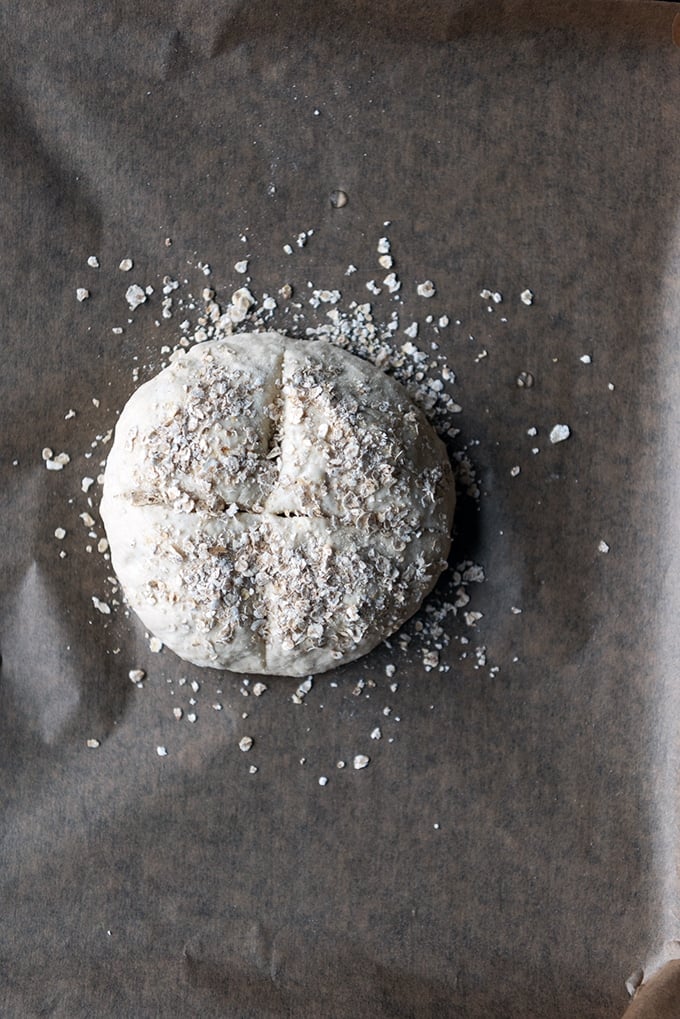
Which Flour Can We Use?
While we use all-purpose flour in our no-yeast bread recipe for its reliability and balanced texture, you might be curious about using other types of flour. Here's a look at some alternatives and how they can change your bread:
1. Whole Wheat Flour: For a heartier, more nutritious loaf, you can try whole wheat flour. It's richer in fiber but keep in mind that it can make your bread denser and heavier. You might want to use a mix of whole wheat and all-purpose flour for a lighter texture.
2. Bread Flour: If you're after a chewier texture, bread flour is a good choice. It has a higher protein content, which develops more gluten. This could give your no-yeast bread a more robust structure, but it might also make it less tender.
4. Oat Flour: If you're looking for a slightly nutty flavor, oat flour can be a good choice. It's best used in combination with all-purpose flour to prevent the bread from becoming too dense.
5. Gluten-Free Flours: For those with gluten sensitivities, gluten-free flour blends are available. These blends often combine rice flour, potato flour, and other gluten-free starches. Remember, gluten-free flours don't behave the same way as wheat flour, so the texture of your bread will be different, and you may need to experiment with the recipe.
Can I use self-raising flour?
No, it's not recommended to use self-raising flour in a no-yeast bread recipe that uses baking soda. Self-raising flour contains added leavening agents, which could disrupt the balance of ingredients and affect the texture and rise of your bread.
Alternative Add-Ins
Adding extra ingredients can turn a simple homemade yeastless loaf into something special and unique. Here are some fun and tasty ideas to experiment with:
- Fresh Herbs: Herbs like rosemary, thyme, or oregano add a lovely aroma and flavor.
- Cheese: Who doesn't love cheese? Stir in some grated cheddar, Parmesan, or your favorite cheese for a delicious, savory twist.
- Olives and Sundried Tomatoes: Chopped olives or sundried tomatoes can bring in a nice tangy and salty kick.
- Seeds and Nuts: For a crunchy texture, add seeds like sunflower, pumpkin, or sesame. Chopped nuts like walnuts or almonds also give a nice bite and pack in extra nutrients.
- Oats: Mix in some rolled oats for added texture and a nutritional boost. It gives the bread a hearty, rustic feel.
How To Make Bread without Yeast
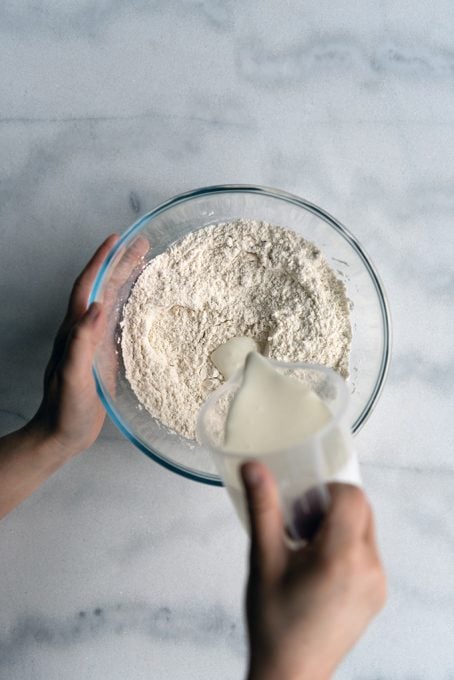
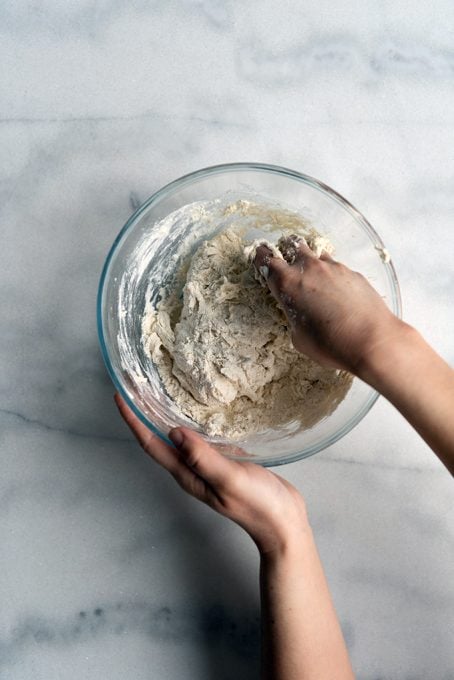
Mix Dry Ingredients: Start by taking a large bowl and gently mixing all your dry ingredients together. Ensure they're well combined for an even flavor distribution.
Prepare Wet Ingredients: In a separate, medium-sized bowl, whisk the Greek yogurt and water together. Keep whisking until you achieve a smooth consistency.
Combine Wet and Dry: Gradually pour the yogurt-water mix into your bowl of dry ingredients. Use your hand to mix them, aiming for a slightly sticky and wet dough. Don't worry if it doesn't look smooth or perfectly combined at this stage.
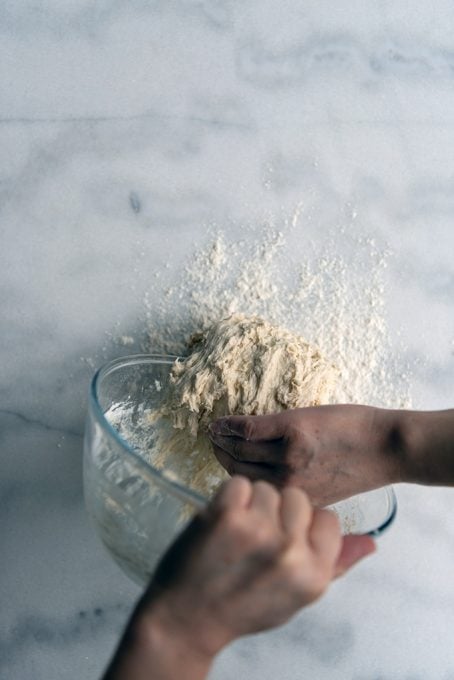
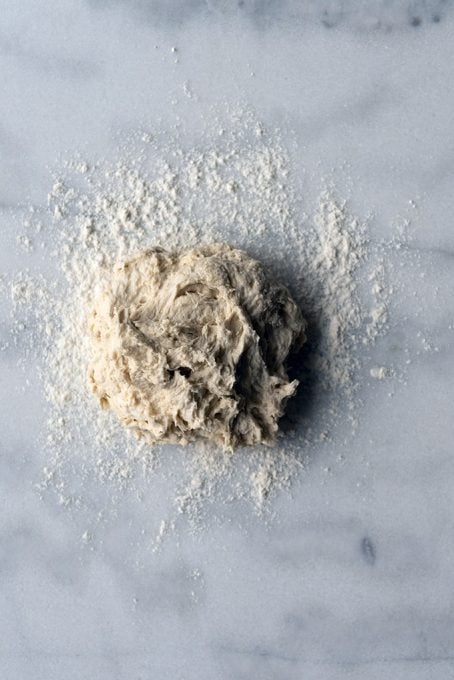
Shape the Dough: Lightly flour your counter and transfer the dough onto it. Gently shape it into a ball. If the dough feels too sticky or runny, lightly sprinkle more flour over it. However, try not to overwork the dough to keep it light and airy.
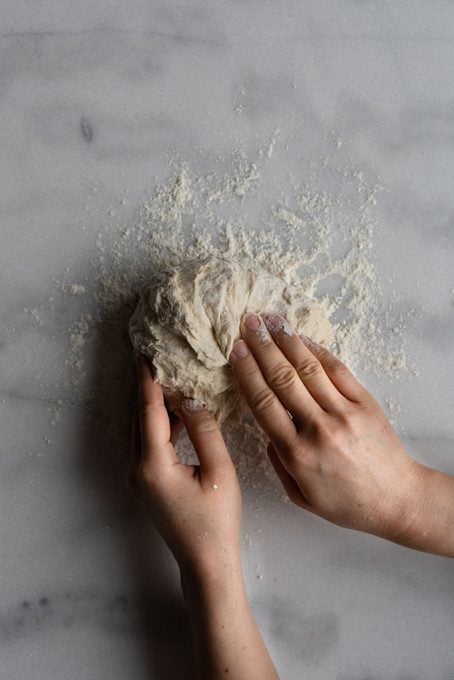
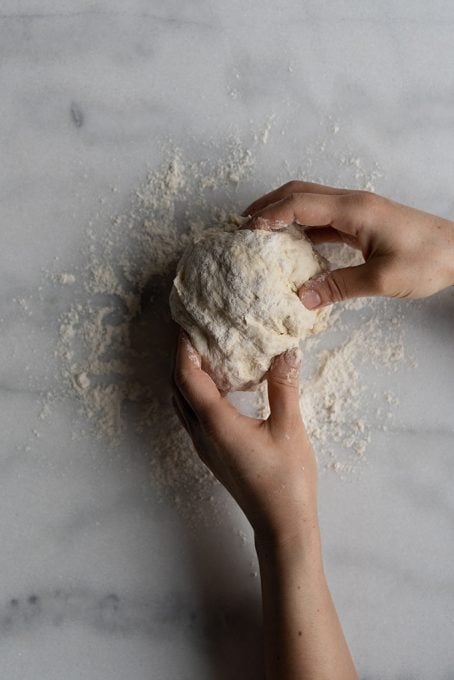
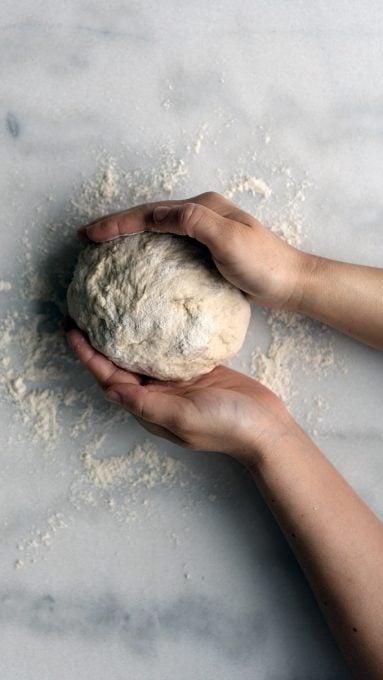
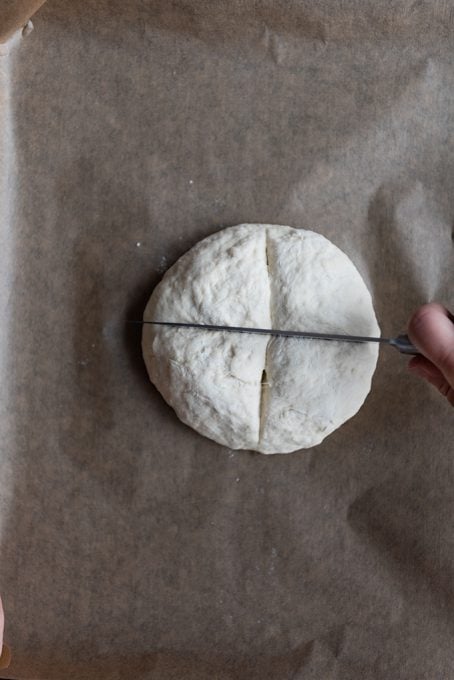
Prepare for Baking: Place the dough ball onto a baking sheet lined with parchment paper. Gently pat the dough to flatten it slightly and to form a disc. Then, using a sharp knife, score a deep cross on top of the dough. This helps with even baking and gives a traditional look.
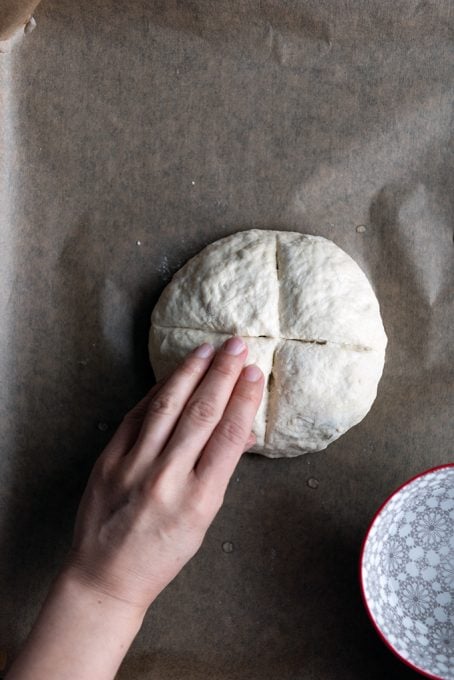
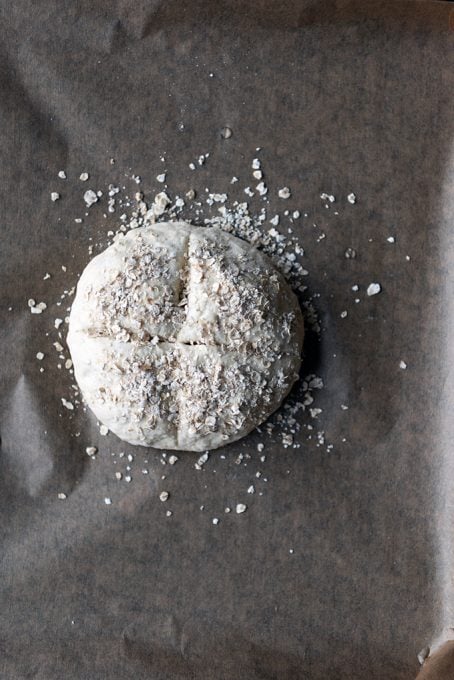
Optional Topping: If you like, dampen the top of the dough with a bit of water on your hand and sprinkle some oats over it. This will add a nice texture to the crust.
Bake the Bread: Finally, bake your bread in a preheated oven until golden. You’re looking for a golden brown crust and a hollow sound when tapped.
Our Tips
Making no-yeast bread is straightforward, but a few crucial tips can make the difference between good and great bread. Here are the most important things to keep in mind:
- Don't Overmix the Dough: Mix the ingredients just enough to combine them. Overmixing can lead to a dense and heavy bread. Kneading Remember, the dough will be a bit sticky and less smooth than yeast dough.
- Flour Your Surface Sparingly: When shaping your dough, use just enough flour to prevent sticking. Too much flour can make the bread dry.
- Minimal Kneading Required: Unlike traditional yeast bread, no-yeast bread doesn't need extensive kneading. Over-kneading can lead to a tough texture. Just gently bring the ingredients together until they form a cohesive dough.
- Score the Bread: Don’t forget to make a shallow cut (like a cross) on top of your dough before baking. This helps the bread expand evenly while baking.
- Watch the Baking Time: Every oven is different, so start checking your bread a few minutes before the suggested baking time ends. The bread is done when it's golden brown and sounds hollow when tapped.
- Cool Before Slicing: Let the bread cool down before slicing. Cutting into hot bread can make it seem undercooked or mushy.
Storing
Homemade no-yeast bread is best enjoyed on the day it's made, but you can still eat it on the next couple of days. Here are some tips to store it properly:
Wrap it Up: Once cooled, wrap your bread in plastic wrap or aluminum foil. This helps to keep the air out and maintain its moisture.
Room Temperature Storage: Store your wrapped bread at room temperature for short-term use. It's best enjoyed within 2-3 days.
Avoid the Refrigerator: Storing bread in the fridge can actually make it go stale faster. Room temperature is the way to go for short-term storage.
Freezing for Later: If you can’t eat all the bread right away, you can freeze it. Slice it first, then wrap each slice and place them in a freezer-safe bag. This bread can be frozen for up to 3 months. Thaw slices at room temperature or toast them straight from the freezer when you’re ready to enjoy.
Reheating to Refresh: If your bread feels a bit stale, revive it by lightly sprinkling water on the crust and warming it in the oven at 300°F (150°C) for about 5 minutes.
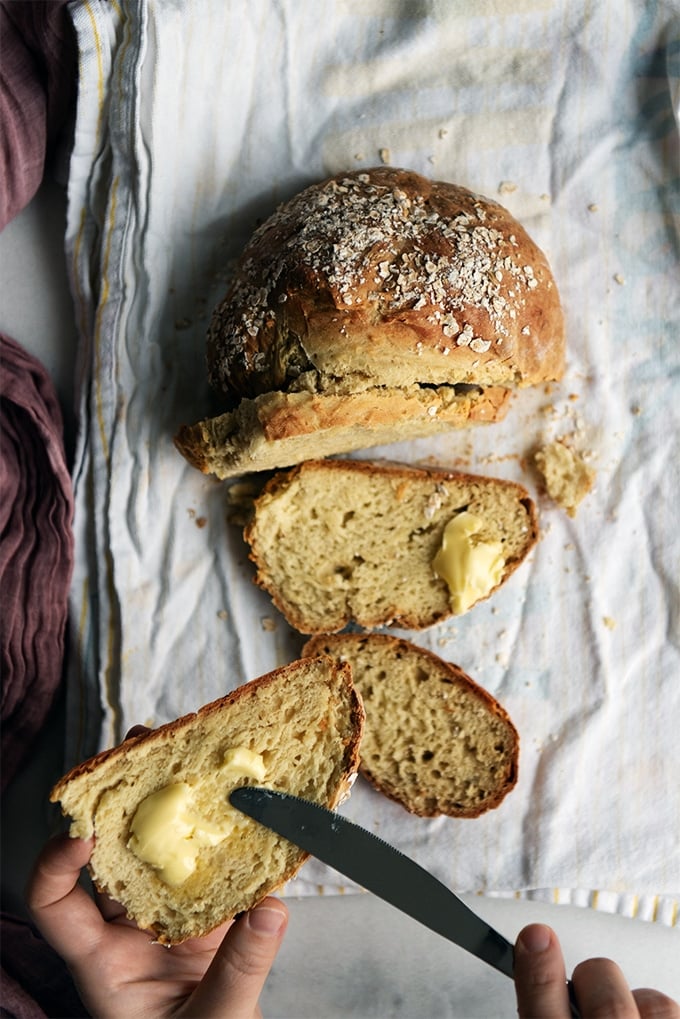
Serving Suggestions
Now, let's talk about some delicious ways to serve it. This versatile bread pairs wonderfully with a variety of toppings and dishes, making it perfect for any meal of the day:
1. Breakfast Delight: Start your morning with a slice of this bread toasted and slathered with butter, jam (plum jam and orange jam are our favorites!), or honey. For a heartier option, top it with avocado and a poached egg, or spread some peanut butter and banana slices for a quick, energy-boosting breakfast.
2. Use As a Sandwich Bread: This bread makes an excellent base for sandwiches. Layer it with your favorite deli meats, cheeses, and veggies for a satisfying lunch. Or try our feta grilled cheese sandwich, letting the bread crisp up beautifully in the pan.
3. Soups: Pair a slice of this bread with your favorite soup. Ours are roasted tomato and garlic soup and tomato carrot soup. It's perfect for dipping into a warm bowl of soup on a chilly day.
4. Appetizer or Snack: Cut the bread into small pieces or strips and serve with dips like Turkish hummus, green olive tapenade, or a sun-dried tomato sauce. It's a great snack or appetizer that's sure to be a hit with guests.
5. Dinner Side: Serve it alongside hearty stews like Turkish beef stew. The bread is fantastic for soaking up sauces and gravies, adding a comforting element to your dinner.
FAQs
When you add too much flour to the dough, it gets crumbly when baked. The dough should be sticky, but when you transfer it to the slightly floured counter and shape it into a ball, it won’t be that sticky.
This could be due to overmixing the dough, not adding enough leavening agent, or using dough that's too dry. Remember to mix just until the ingredients are combined and follow the recipe closely for the best texture.
This could be due to expired leavening agents, not enough leavening agent, or improper mixing. Ensure your baking soda is fresh and that you're measuring ingredients accurately.
If the dough is too sticky, lightly flour your hands and the surface where you're working with the dough. However, be cautious not to add too much flour, as it can dry out the bread.
More Homemade Bread Recipes
As always: If you make this recipe, let us know what you think by rating it and leaving a comment below. And post a pic on Instagram too—tag @give_recipe so we can see!
Sign up for the FREE GiveRecipe Newsletter to get the new recipes into your inbox! And stay in touch with us on Facebook, Pinterest, YouTube and Instagram for all the latest updates.
📖 Recipe

No Yeast Homemade Bread
INGREDIENTS
- 2 cups all-purpose flour plus more for the counter
- 1 teaspoon salt
- 1 teaspoon baking soda
- ¾ cup Greek yogurt
- ¼ cup water
Optional topping:
- 1 tablespoon oats
INSTRUCTIONS
- Preheat your oven to 375F / 180C. Line a baking sheet with parchment paper and set it aside.
- In a large bowl, whisk together all-purpose flour, salt and baking soda.
- In a medium bowl, whisk together Greek yogurt and water. (Read the substitutes for yogurt above)
- Pour the wet mixture gradually into the dry mixture and mix with your hand to form a slightly wet and sticky dough.
- Transfer it on a slightly floured counter and bring it together in a ball shape. Sprinkle a little extra flour if needed and roll it into a ball. Just don’t overplay with the dough.
- Place the dough on a parchment paper lined baking sheet. Gently pat it down and make a cross on it with a knife for an even baking.
- For optional topping, wet the top of the dough with your hand and sprinkle oats over it. This will result in a nice texture on the crust.
- Finally, bake in a preheated oven for 25-30 minutes.
NUTRITION
Nutrition information is automatically calculated, so should only be used as an approximation.
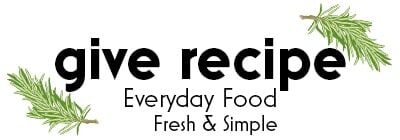

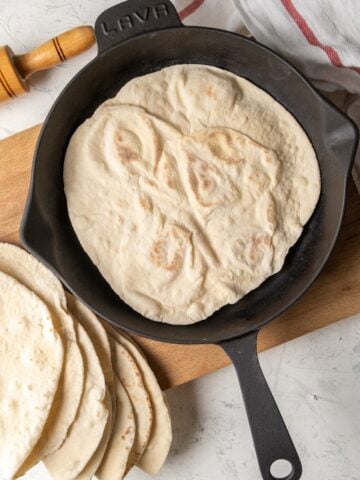
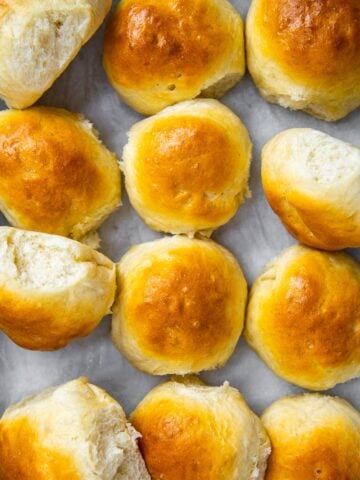
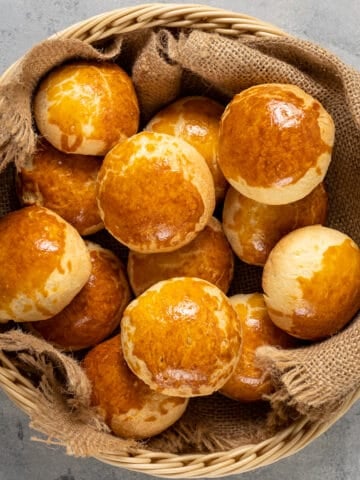
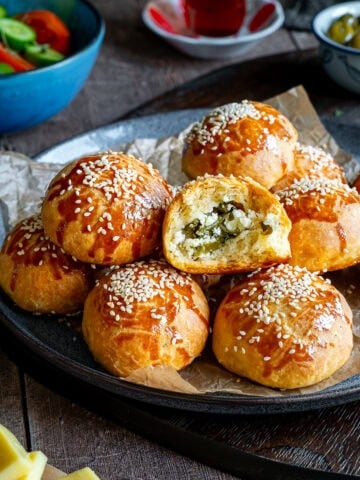
Maurissa says
Delicious and so easy! Thank you for the very helpful tips! Thank you for sharing this recipe!
Zerrin & Yusuf says
We are so happy to hear this! Thanks for the comment 🙂
Martina says
This looks so lovely! I can't eat regular bread atm due to my swallowing problems so was looking for a yest-less recipe which falls apart in your mouth! Can't wait to try it! How did you achieve the colour using only all purpose flour? It looks more appetising then just a regular plain white flour bread. Thank you for sharing! 🙂
Alison says
This is a lovely simple and quick recipe, but when I doubled the quantity, the loaf was raw in the middle. What cooking time & temperature is best for the doubled and tripled version please? I just did 30 mins at 180 Deg Celsius. Thanks
Zerrin & Yusuf says
Hi Alison,
Thank you for this question.
If you double the recipe, we recommend that you divide the dough into two and bake two loaves instead of making a big one loaf. And when you triple it, then make three loaves.
Nat says
Great recipe! Bread is very restful! Thank you
Zerrin & Yusuf says
Hi Nat,
Glad you liked the bread. Thank you for leaving a comment!
Anne-Katrin Plathner says
Came out great with a loaf form. Cut it in the middle. Perfect!
Roberta says
This is an excellent recipe! So easy, I have been making a small loaf every week, and it even freezes well. I have been using Einkorn flour (about half whole wheat and half white). Wonderful for sandwiches, to eat with soups, or with butter and jam. It reminds me a bit of Irish brown bread, but not as dense. Thank you for sharing this recipe!
Zerrin & Yusuf says
Hi Roberta, so happy you liked it! We love these with butter and jam too. Never used Einkorn flour before, sounds like a good option. Thank you for sharing this!
Eleyna says
Was so easy to make! Added some seeds and nuts in the dough. Turned out great!
Yusuf says
Hi Eleyna,
Adding seeds and nuts is a great idea!
Toni says
Made this with whole wheat flour mixed with flaxmeal and oat fibre. It was fantastic. And the carbs were acceptable too.
Zerrin & Yusuf says
Glad to hear that Toni. Thank you for sharing this here! We are sure it will be helpful to others.
Jack says
Can I use buckwheat or spelt flour for this?
Thanks
Yusuf says
Hi Jack,
We never tried it with buckwheat or spelt flour, so I don't want to mislead you.
That being said, I think it would be better to combine these flours with all purpose.